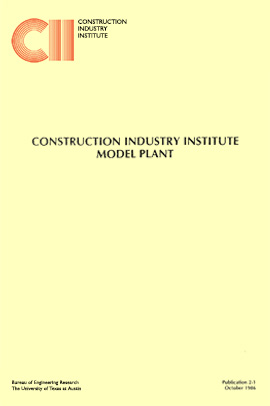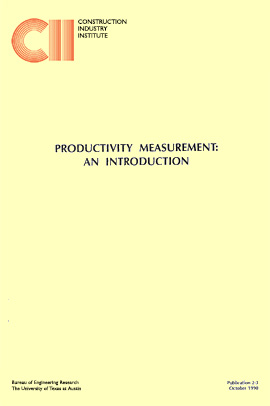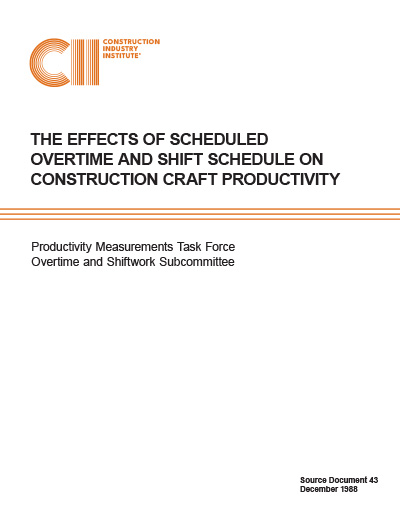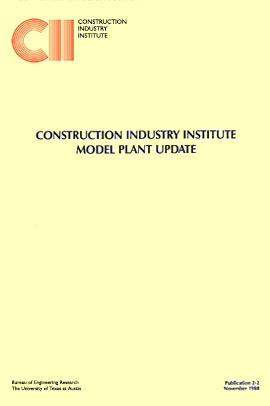
Construction Industry Institute Model Plant
This report is an introduction to the CII Model Plant Project. The Model Plant is a typical facility physical baseline against which to measure construction productivity.
A need for an industry-wide construction productivity measurement baseline has been recognized for a number of years. Construction productivity data for nationwide use is either not available or considered unreliable. The Business Roundtable Construction Industry Cost Effectiveness (CICE) Project Report A-1, “Measuring Productivity in Construction,” included a recommendation to measure site-level productivity in selected private construction segments. The report suggested a logical segment scheme based on construction volume.
The CII Productivity Measurements Task Force proposes the establishment of industry standard baseline construction labor estimates for logical segments of the industry. With consideration of the demographics of the CII membership, a large percentage of which is heavily involved in the petrochemical industry, a typical petrochemical facility has been chosen as the initial physical baseline facility.
The primary goal of the Model Plant Project is to develop a basic petrochemical model plant, simple and generic in nature, such that the construction industry can have a physical base against which to measure productivity. Data from collection of direct labor estimates for a “typical” petrochemical processing facility have been chosen as the foundation of the baseline, hence the name “Model Plant.”
Future plans include developing similar model projects for other segments of the industry.
The Model Plant represents a petrochemical process plant that costs in the range of $75-85 million to construct. It consists of nine areas, including a tank farm, underground piping, pipe bridge, fractionation unit, and others. Material takeoffs defining the labor scope of work have been performed from design documents that were supplied by several CII member companies. A code of accounts has been established for the various scopes of work at a detail and summary level. Contractors and owners, based on actual experience, have estimated the amount of construction labor that would be required to build selected parts of the Model Plant. These estimates form a “Baseline One.” Estimates in the future for the identical scopes of work will be performed at one- to two-year intervals and compared to “Baseline One.”
A tremendous amount of effort has been exerted over the years toward identifying construction standards or common measurements. The variables are vast in number, and have seemed elusive and nearly insurmountable. The code of accounts established for the Model Plant could serve as a standard index to existing codes of accounts, simplifying comparison of project performance within the petrochemical industry.
The data (estimated work-hours of labor) that establish the productivity measurement “Baseline One” will be published separately. The code of accounts, including specific definitions of items included in each activity or cost classification, will be published as a CII source document.
In addition to its use as a standard for productivity measurement, the CII Model Plant is intended to provide a point of reference for other construction research activities. For example, it can be used as a base for impacts of constructability or technology innovation. The Model Plant also can be used as a demonstration example for new concepts or ideas.



